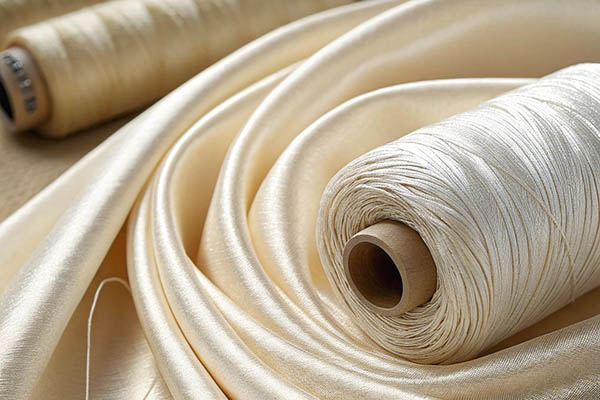Fabric is essential in fashion, home textiles, and industrial applications. But what do we call the professionals and companies that create fabrics?
A fabric maker is commonly referred to as a textile manufacturer1, textile producer, or fabric mill. These entities are responsible for converting raw materials like cotton, wool, or synthetic fibers into finished fabrics used for various purposes.
Let’s explore the different types of fabric makers, their roles, and how they shape the global textile industry.

What Are the Different Types of Fabric Makers?
Fabric makers operate at different levels of the textile supply chain. But what are the main categories?
Fabric makers fall into different categories based on their function, including textile mills, weaving mills, knitting mills, dyeing and finishing plants, and specialty fabric manufacturers.
Textile Mills
Textile mills process raw fibers like cotton, polyester, or wool into yarn or fabric. They handle spinning, weaving, knitting, and dyeing.
Key Features:
- Large-scale production facilities
- Involvement in multiple stages of textile production
- Use of automated machinery for efficiency
Weaving Mills
Weaving mills specialize in creating woven fabrics using looms. These manufacturers produce textiles such as denim, linen, and twill.
Common Products:
- Cotton shirts
- Denim jeans
- Upholstery fabrics
Knitting Mills
Knitting mills focus on making knitted fabrics, which are softer and stretchier than woven textiles.
Common Products:
- T-shirts
- Activewear
- Sweaters
Dyeing and Finishing Plants
These facilities specialize in adding color, texture, and finishing treatments to fabric.
Processes Include:
- Dyeing (solid colors, patterns)
- Printing (digital, screen printing)
- Finishing (anti-wrinkle, waterproofing)
Specialty Fabric Manufacturers
Some companies focus on high-tech or niche textiles, including:
- Fire-resistant fabrics (for firefighters, military)
- Medical textiles (bandages, hospital gowns)
- Eco-friendly fabrics (organic cotton, bamboo)
How Do Fabric Makers Produce Textiles?
Fabric production involves multiple steps. But what is the process from fiber to finished fabric?
Fabric makers follow a structured process: fiber selection, spinning, weaving/knitting, dyeing, and finishing. Each step impacts the final fabric’s quality and properties.

Step 1: Fiber Selection
Manufacturers choose natural, synthetic, or blended fibers based on the intended use.
Examples of Common Fibers:
- Natural fibers: Cotton, wool, silk
- Synthetic fibers: Polyester, nylon, spandex
- Blended fibers: Cotton-polyester, wool-nylon
Step 2: Spinning
Raw fibers are spun into yarn through a mechanical process that determines the fabric’s durability and softness.
Step 3: Weaving or Knitting
- Weaving: Uses looms to create structured fabrics.
- Knitting: Produces soft, stretchy fabrics with interlocking loops.
Step 4: Dyeing and Printing
Fabric is colored or printed with patterns using various methods, such as screen printing and digital printing.
Step 5: Finishing
This final stage includes treatments like water resistance, anti-wrinkle coatings, and softness enhancements.
What Are the Largest Fabric Makers in the World?
Fabric production is a global industry, but which companies dominate?
The world’s top fabric manufacturers include Luthai Textile (China), Reliance Industries (India), Toray Industries (Japan), and Milliken & Company (USA).
Leading Fabric Makers by Country
| Country | Top Fabric Manufacturers |
|---|---|
| China | Luthai Textile, Shandong Ruyi, Texhong Textile |
| India | Reliance Industries, Arvind Limited, Welspun India |
| USA | Milliken & Company, Parkdale Mills, Glen Raven |
| Japan | Toray Industries, Teijin Limited, Asahi Kasei |
| Italy | Albini Group, Loro Piana, Vitale Barberis Canonico |
These companies produce textiles for industries ranging from fashion to automotive and home décor.

How Do Fabric Makers Impact the Fashion Industry?
The fashion industry relies on fabric makers to create high-quality materials. But how do fabric manufacturers influence trends?
Fabric makers shape the fashion industry by developing new textiles, improving sustainability2, and setting quality standards.
Innovations in Textile Development
Fabric manufacturers introduce new materials that revolutionize fashion. Some innovations include:
- Moisture-wicking fabrics (used in sportswear)
- Recycled textiles (made from plastic bottles)
- Smart textiles (self-cleaning, temperature-regulating)
Sustainability and Ethical Production
Many fabric manufacturers are adopting eco-friendly practices, such as:
- Organic fibers – Cotton grown without pesticides
- Waterless dyeing – Reduces water pollution
- Fair labor policies – Ethical sourcing of raw materials
What Challenges Do Fabric Makers Face?
The textile industry has challenges that impact production. But what are the biggest issues fabric makers deal with?
Fabric makers face rising costs, supply chain disruptions, environmental concerns, and increasing demand for sustainable materials.
Rising Costs
- Fluctuating prices of cotton, wool, and synthetic fibers
- Higher wages in traditional textile hubs like China
Supply Chain Disruptions
- Shipping delays due to global crises
- Dependency on international suppliers for raw materials
Environmental Regulations
- Strict pollution laws requiring investment in cleaner production methods
- Increasing pressure to use sustainable and biodegradable fabrics
Fast Fashion vs. Sustainability
- Demand for cheap, mass-produced textiles conflicts with sustainability goals
- Growing preference for slow fashion and durable materials
How to Choose the Right Fabric Maker for Your Business?
For designers and brands, selecting a reliable fabric supplier is crucial. But what factors should you consider?
Choosing the right fabric manufacturer involves evaluating quality, sustainability, production capacity, and pricing.
Key Factors to Consider
| Factor | Why It’s Important |
|---|---|
| Quality Standards | Ensures durability and performance. |
| Sustainability | Supports eco-friendly production. |
| Production Capacity | Matches your brand’s volume needs. |
| Pricing | Balances affordability with material quality. |
| Lead Time | Affects inventory planning. |
Many brands work with textile mills that align with their values and product requirements, ensuring a successful partnership.
Conclusion
A fabric maker, also known as a textile manufacturer or fabric mill, plays a crucial role in producing textiles for fashion, home goods, and industrial applications. Whether focusing on weaving, knitting, or specialty fabrics, these companies drive innovation and sustainability in the textile industry. As the demand for high-quality and eco-friendly materials grows, fabric manufacturers will continue to evolve to meet consumer needs.













